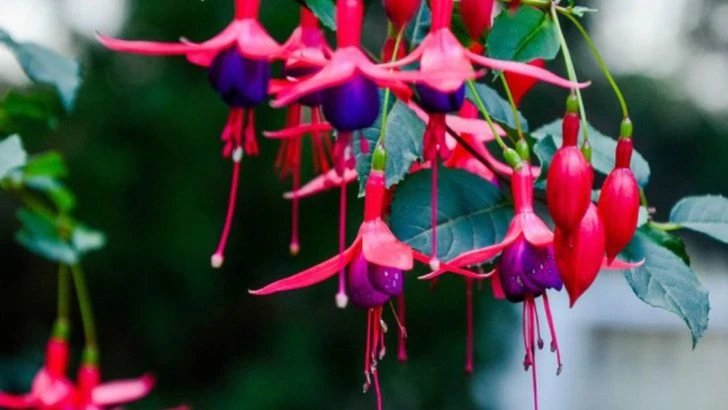If you live in an area with consistent rainfall or naturally wet soils, you might find it tricky to choose plants that thrive in these conditions. While some plants flourish in these moist, waterlogged environments, others struggle, often wilting or becoming susceptible to diseases. Understanding which plants are adapted to wet climates can save you time, effort, and frustration in the garden.
In this list, we’ve highlighted 10 flowering plants that love wet climates and will thrive in areas that are prone to heavy rainfall or poor drainage. Plus, we’ll explore 5 plants that may struggle in such conditions, so you can avoid planting them where they might become stressed or fail to grow as expected. Choose wisely and create a lush, thriving garden that handles the wettest of days with ease.
Hibiscus
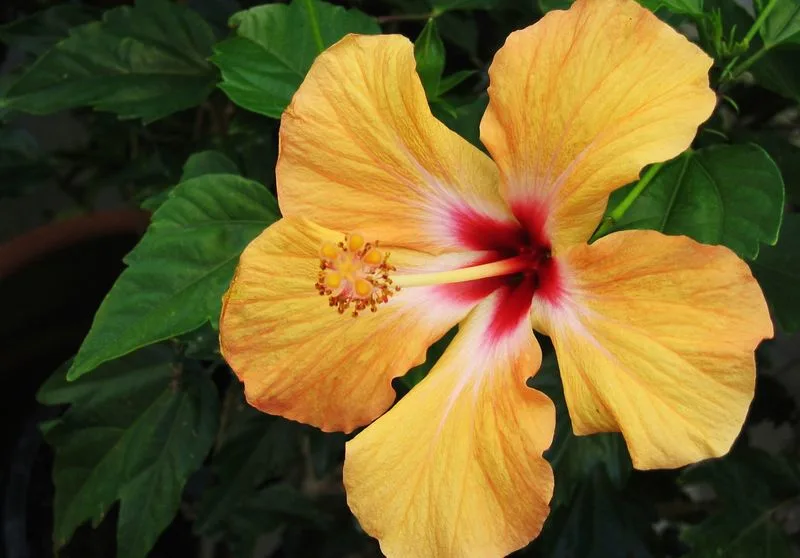
Famed for its large, colorful blooms, the hibiscus thrives in moist environments. This tropical beauty relishes the abundant rainfall, rewarding gardeners with showy flowers that can transform any garden into a paradise. The hibiscus comes alive in wet conditions, its petals unfurling to reveal captivating colors that range from deep reds to soft pinks. However, it’s not just aesthetics that make this plant appealing; it’s also a favorite among hummingbirds and butterflies. By ensuring consistent moisture and avoiding dry spells, you can keep your hibiscus blooming beautifully, turning heads and attracting wildlife.
Japanese Iris
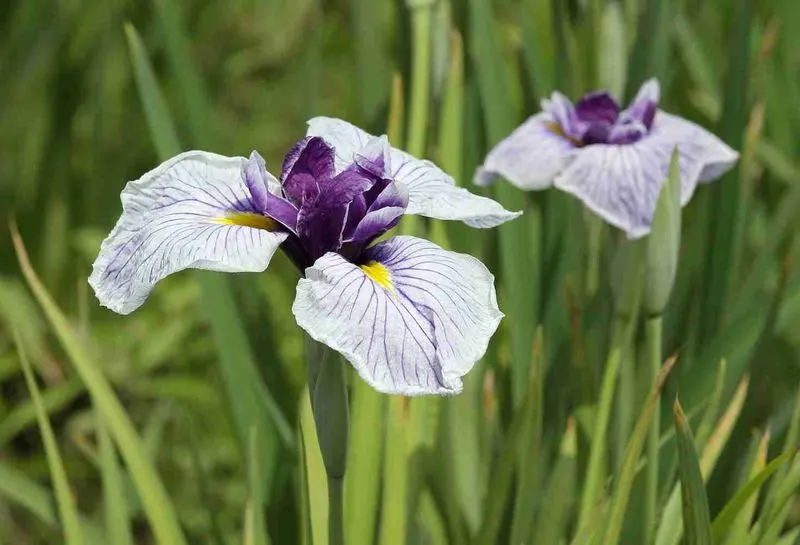
The elegance of the Japanese iris is unmatched, with its delicate petals adding a touch of grace to any garden. Suited for wet climates, this plant adores the soggy conditions that would drown many others. Its striking purple and blue hues stand out against the lush greenery, creating an enchanting visual display. The Japanese iris can often be found near ponds or streams, where its roots can stay happily submerged. Gardeners love its low maintenance nature, as it requires little more than adequate water to flourish and enchant any landscape.
Calla Lily
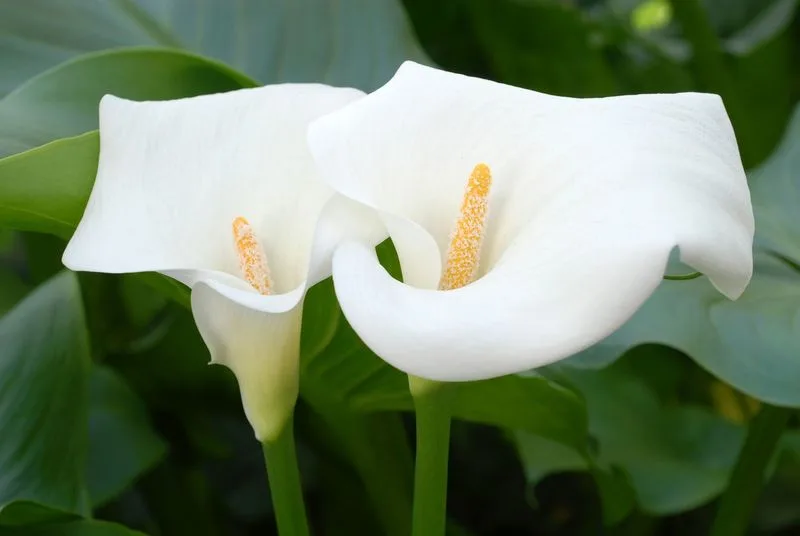
With its sleek, trumpet-shaped blooms, the calla lily brings sophistication to wet gardens. These perennials are perfect for damp environments, flourishing in the marshy soils they naturally call home. The calla lily’s pristine white flowers stand tall, catching the morning light in a dance of elegance and purity. Known for its versatility, this plant can be a striking addition to both ornamental gardens and natural wetland settings. Easy to care for, it requires minimal effort beyond regular watering, making it a favorite for those seeking beauty with little fuss.
Swamp Milkweed
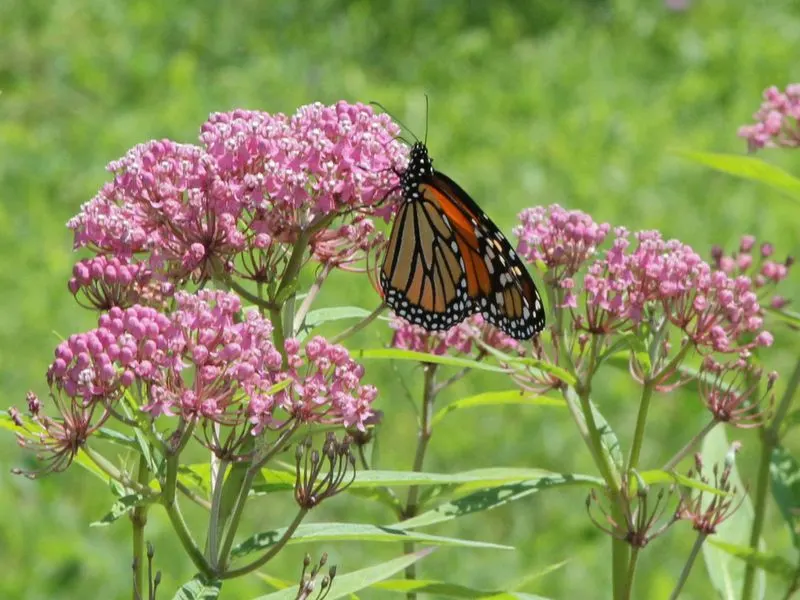
Swamp milkweed is more than a plant; it’s a haven for monarch butterflies. Its clusters of pink blooms are not only visually appealing but also serve a crucial ecological role in wetland areas. Thriving in moisture-rich soils, swamp milkweed can transform a damp corner into a vibrant sanctuary for pollinators. This plant’s resilience to soggy conditions makes it an excellent choice for gardeners looking to support local wildlife. With its delightful fragrance and ecological benefits, swamp milkweed is a standout choice for enhancing both beauty and biodiversity in wet areas.
Astilbe
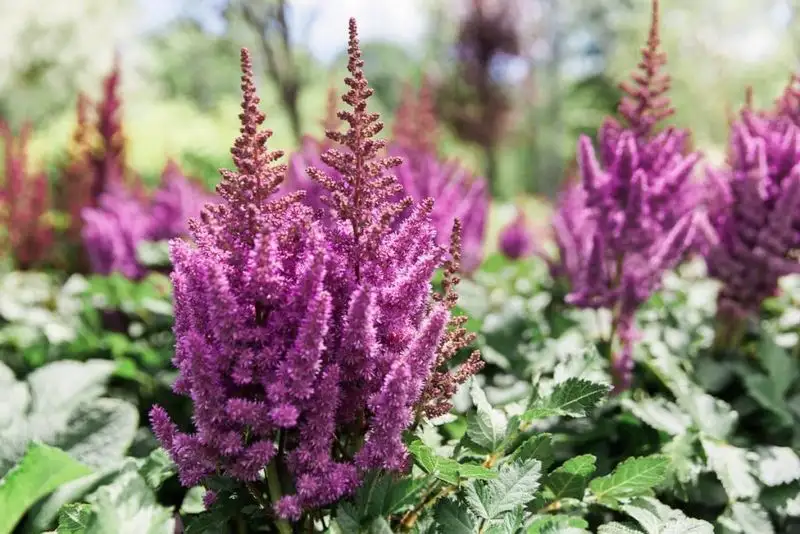
Astilbe brings a touch of whimsy with its feathery plumes and pastel shades. Thriving in shaded, moist environments, this plant offers texture and color where few others dare to grow. Perfect for woodland gardens, it adds depth and interest to shaded areas that receive ample moisture. The fluffy blooms of astilbe are not only eye-catching but also long-lasting, providing visual interest throughout its flowering season. For gardeners seeking to brighten up dark, damp corners, astilbe is a reliable choice, bringing life and light to even the gloomiest spots.
Canna Lily
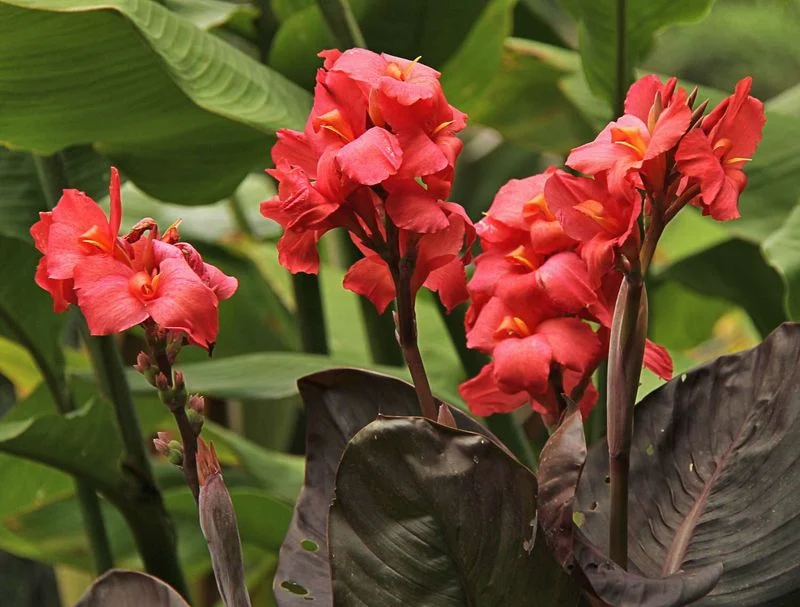
The canna lily exudes tropical flair with its bold, vibrant blooms and lush foliage. Well-suited to wet environments, it flourishes in garden beds that receive heavy rainfall. Its bright red and yellow flowers stand out dramatically against green foliage, adding a touch of the exotic to any garden setting. The canna lily is more than just visually appealing; it’s also remarkably easy to grow, requiring little more than regular watering and sun to reach its full potential. This makes it ideal for gardeners seeking a touch of tropical elegance with minimal effort.
Fuchsia
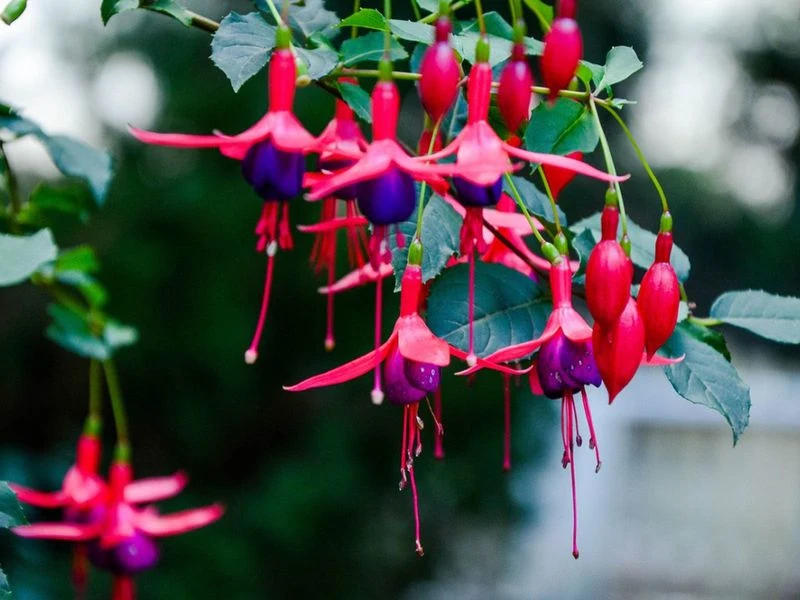
Fuchsia’s pendulous flowers are a delight to behold, offering vibrant colors that dance in the breeze. This plant thrives in the moist, shaded corners of the garden, where its delicate blooms can create a stunning display without direct sunlight. Known for its adaptability, fuchsia is perfect for hanging baskets, providing cascades of color that can brighten any area. With a preference for cool, damp conditions, it rewards gardeners with a profusion of flowers that attract hummingbirds and add a lively touch. Careful watering ensures fuchsia’s health and continuous bloom.
Lobelia
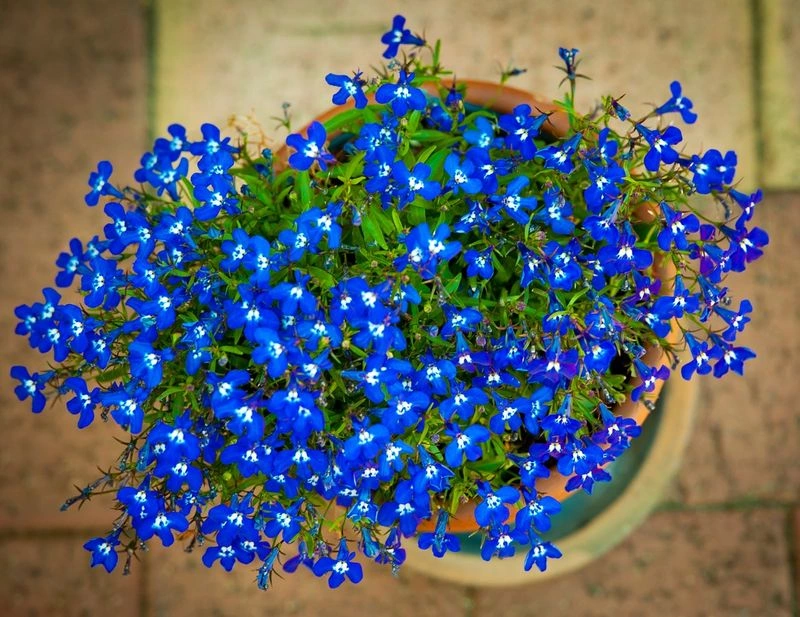
Lobelia captivates with its intensely blue blooms that spill over garden edges and containers. This versatile plant is a favorite in wet climates, thriving in areas that others might shy away from. Its cascading nature makes it ideal for hanging baskets and window boxes, where it can trail gracefully down, creating waves of color. Lobelia’s charming appearance isn’t just for show; it also provides nectar for pollinators, making it beneficial for garden biodiversity. Easy to care for, this plant needs consistent moisture and occasional feeding for optimal growth.
Marsh Marigold
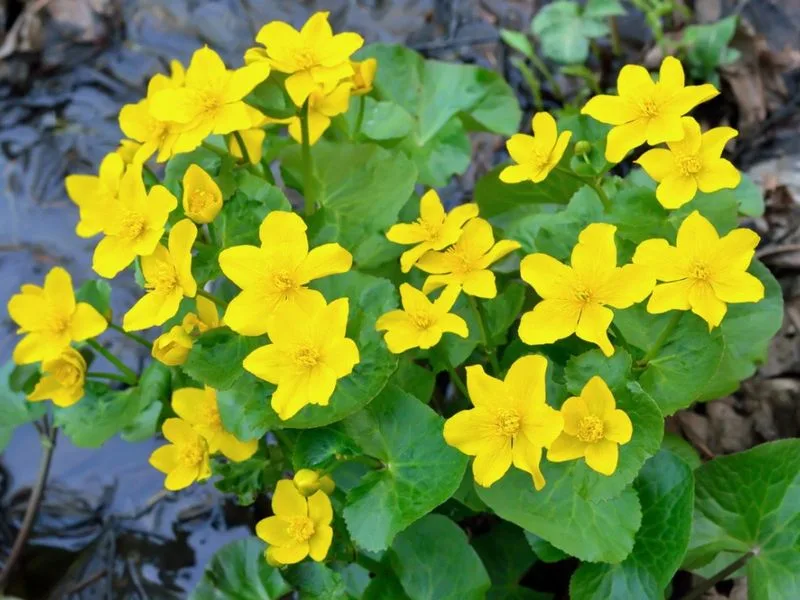
Marsh marigold is a ray of sunshine in wet landscapes, with bright yellow flowers that herald the arrival of spring. This hardy perennial thrives in marshy conditions, often found near water bodies where its roots can stay moist. Its cheerful blooms bring a splash of color to the garden, creating a warm and inviting atmosphere. Beyond its visual appeal, the marsh marigold is also easy to grow, requiring little more than a damp environment to thrive. Its early blooming period makes it a welcome sight after long winters, signaling new beginnings.
Hydrangea
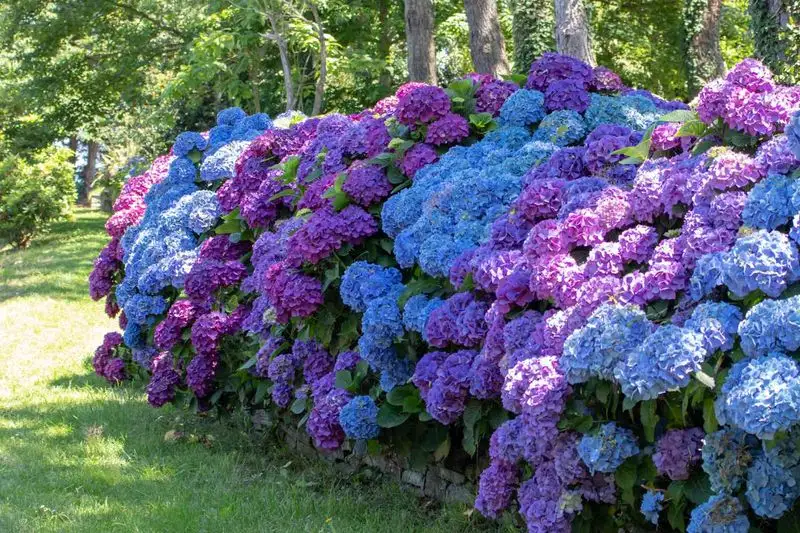
Hydrangeas are synonymous with elegance, their large blooms creating stunning displays in gardens. These plants love the humidity and can handle the heavy rain that comes with wet climates. With colors that range from pink to blue depending on soil pH, hydrangeas offer versatility in design. Their lush flower heads are perfect for both formal and casual settings, adding volume and texture. Hydrangeas are relatively low maintenance, needing regular watering and occasional pruning to keep them in peak condition. Their ability to thrive in such conditions makes them a garden staple.
Lavender
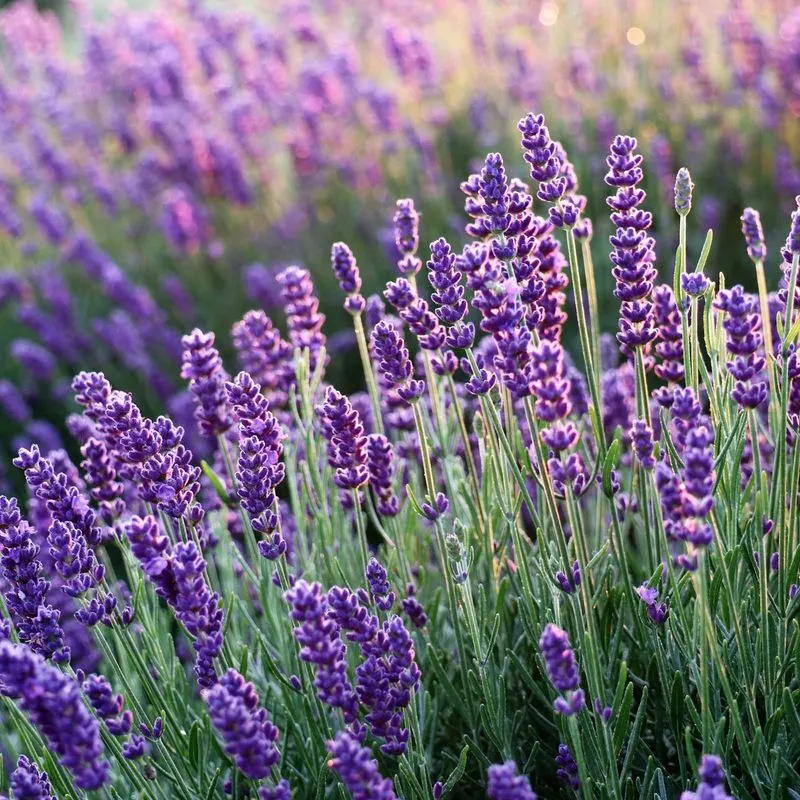
Lavender, known for its soothing fragrance and purple blooms, often struggles in wet climates. Its preference for dry, well-drained soil means that heavy rainfall and humidity can lead to root rot and other issues. Despite these challenges, some gardeners attempt to grow lavender by providing raised beds or containers with adequate drainage. The beauty of lavender is undeniable, with its aromatic quality and delicate flowers making it a popular choice in drier regions. However, in wet climates, it often requires additional care and attention to survive, let alone thrive.
Rosemary
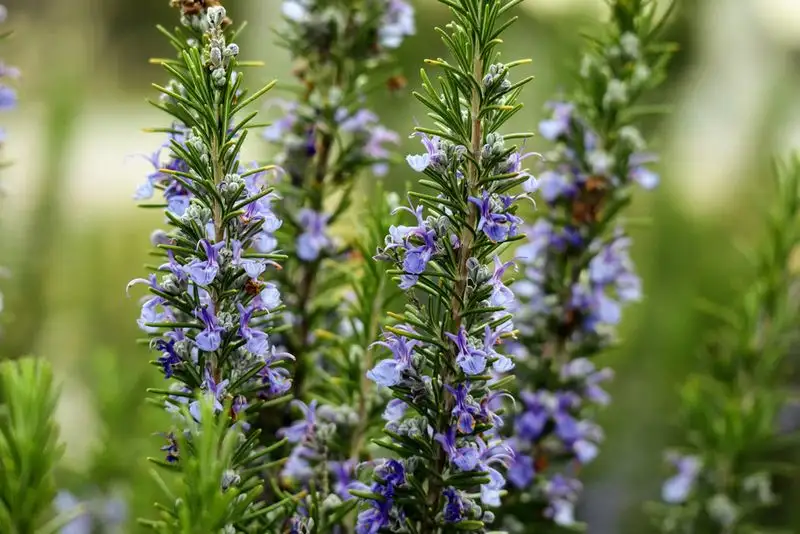
Rosemary, a culinary favorite, faces significant hurdles in wet climates. Its Mediterranean origins favor sunny, arid conditions, making excess moisture detrimental to its health. In wet environments, rosemary is prone to fungal diseases and root issues. To combat this, gardeners may plant rosemary in well-drained soils or raised beds to prevent waterlogging. Despite its challenges, the aromatic and flavorful leaves of rosemary make it a sought-after herb. In unfavorable conditions, however, maintaining its health requires vigilance and strategic planting, often turning a straightforward plant into a tricky endeavor.
French Lavender
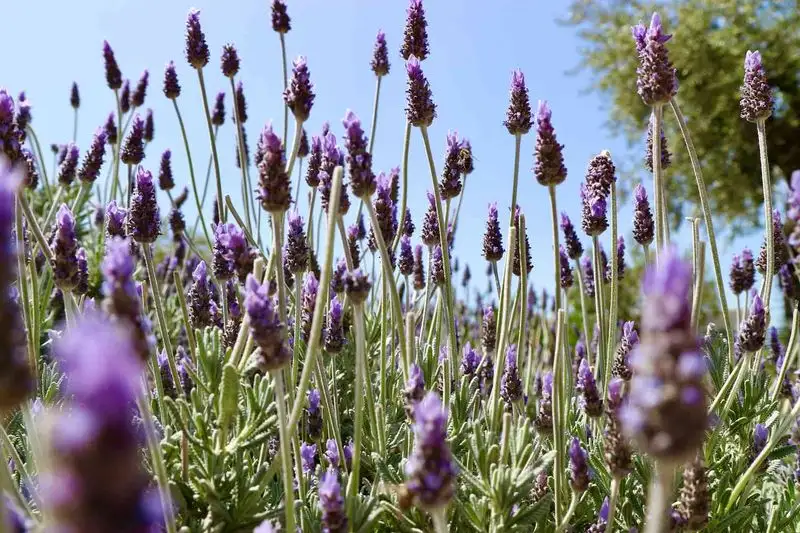
French lavender, with its distinct foliage and aromatic scent, often underperforms in wet climates. This variety, like its relatives, prefers dry, airy environments, where humidity is low. The persistent dampness of wet regions can lead to fungal infections and poor growth, leaving this plant struggling. To grow French lavender successfully, gardeners might use pots with excellent drainage and position them in sheltered spots. The allure of its fragrant blooms makes it worth the effort, but in wet conditions, it demands extra care and attention to flourish without wilting under pressure.
Sage
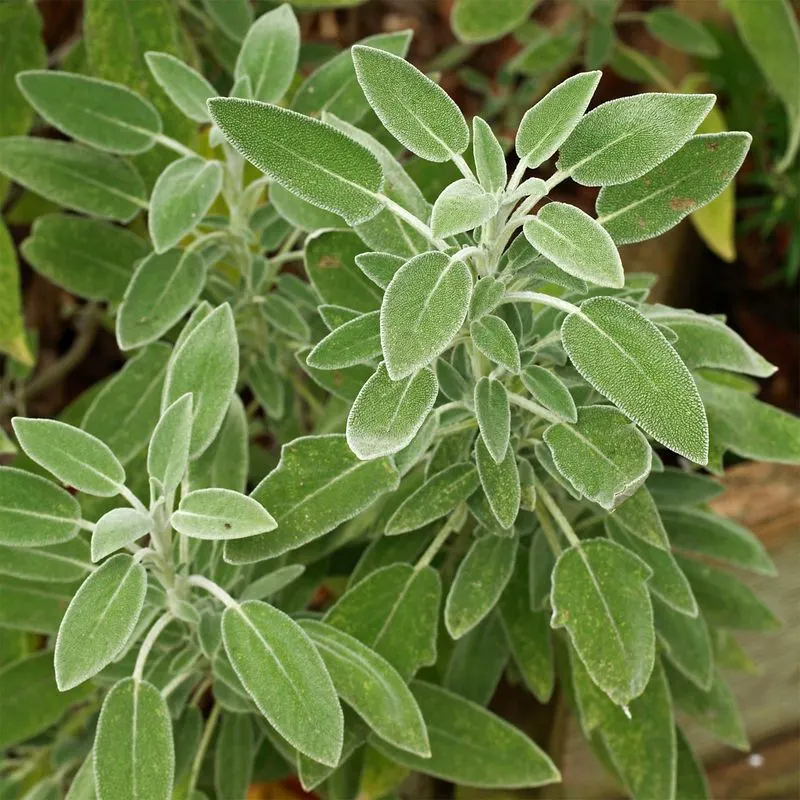
Sage is another plant that suffers in wet climates, despite its robust nature. Originating from the Mediterranean, sage prefers well-drained soil and sunny locations, making constant moisture a challenge. In soggy conditions, sage can become leggy and prone to rot, requiring careful site selection and soil amendments to ensure drainage. For gardeners determined to include sage in their gardens, raised beds or containers are often the best solution. Even then, keeping sage healthy in wet climates requires dedication, but the reward of its aromatic leaves can justify the effort.
Sedum
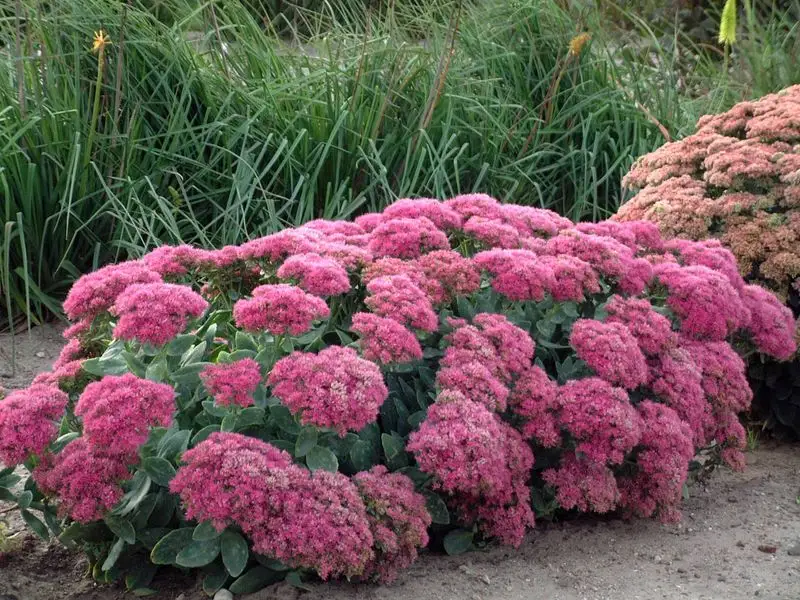
Sedum, or stonecrop, known for its succulent leaves, often finds wet climates challenging. These plants excel in dry, rocky habitats, where water drains away swiftly. Excessive moisture can lead to root rot and decay in sedum, making wet environments less than ideal. To give sedum a fighting chance, gardeners employ well-draining soil mixtures and rock gardens, ensuring excess water doesn’t linger. While sedum can add unique texture and color to gardens, in consistently damp areas, it requires extra attention and effort to maintain its structural integrity and appeal.

